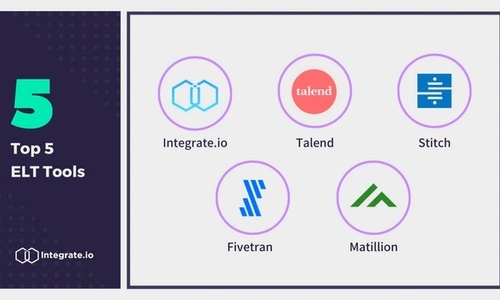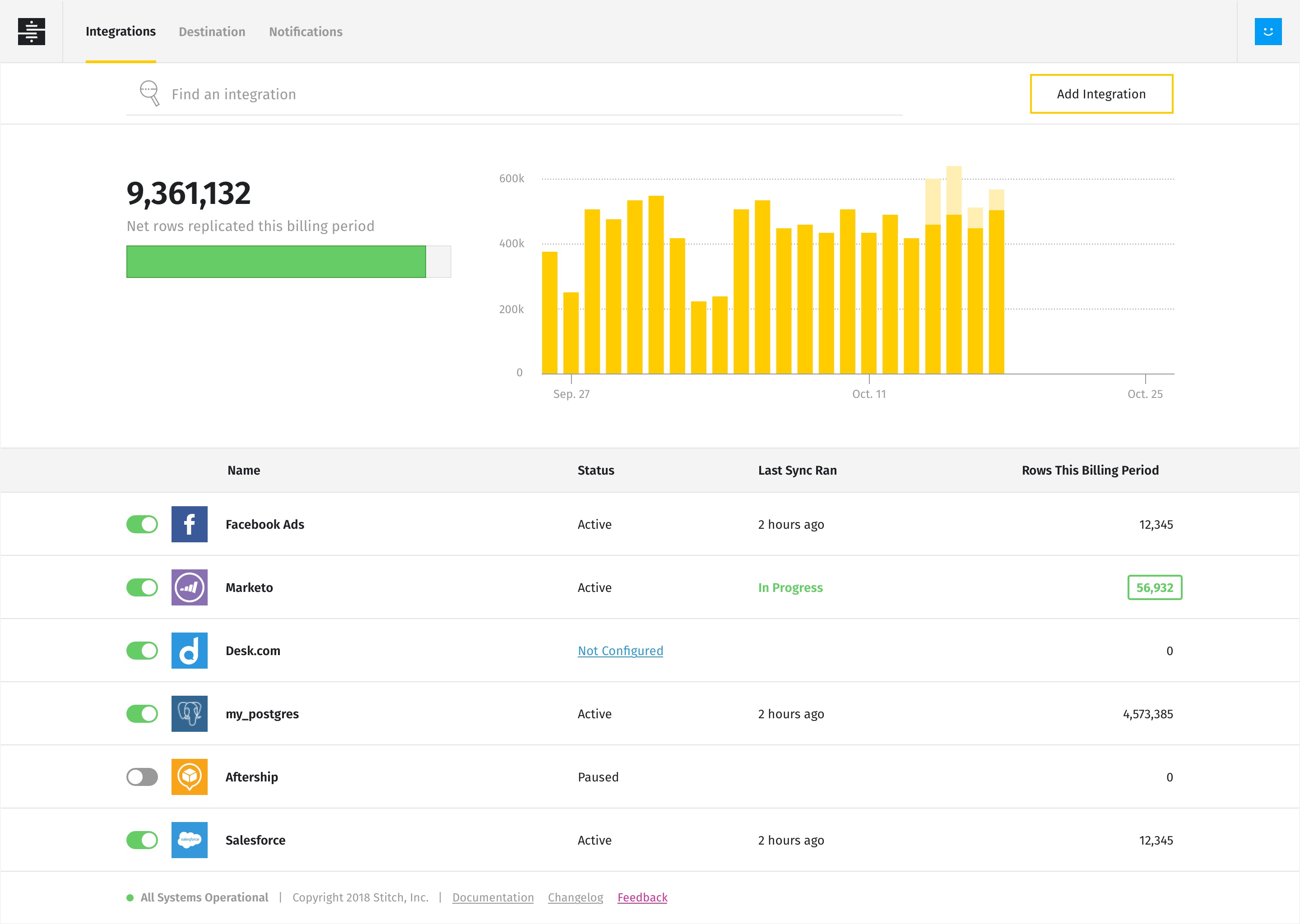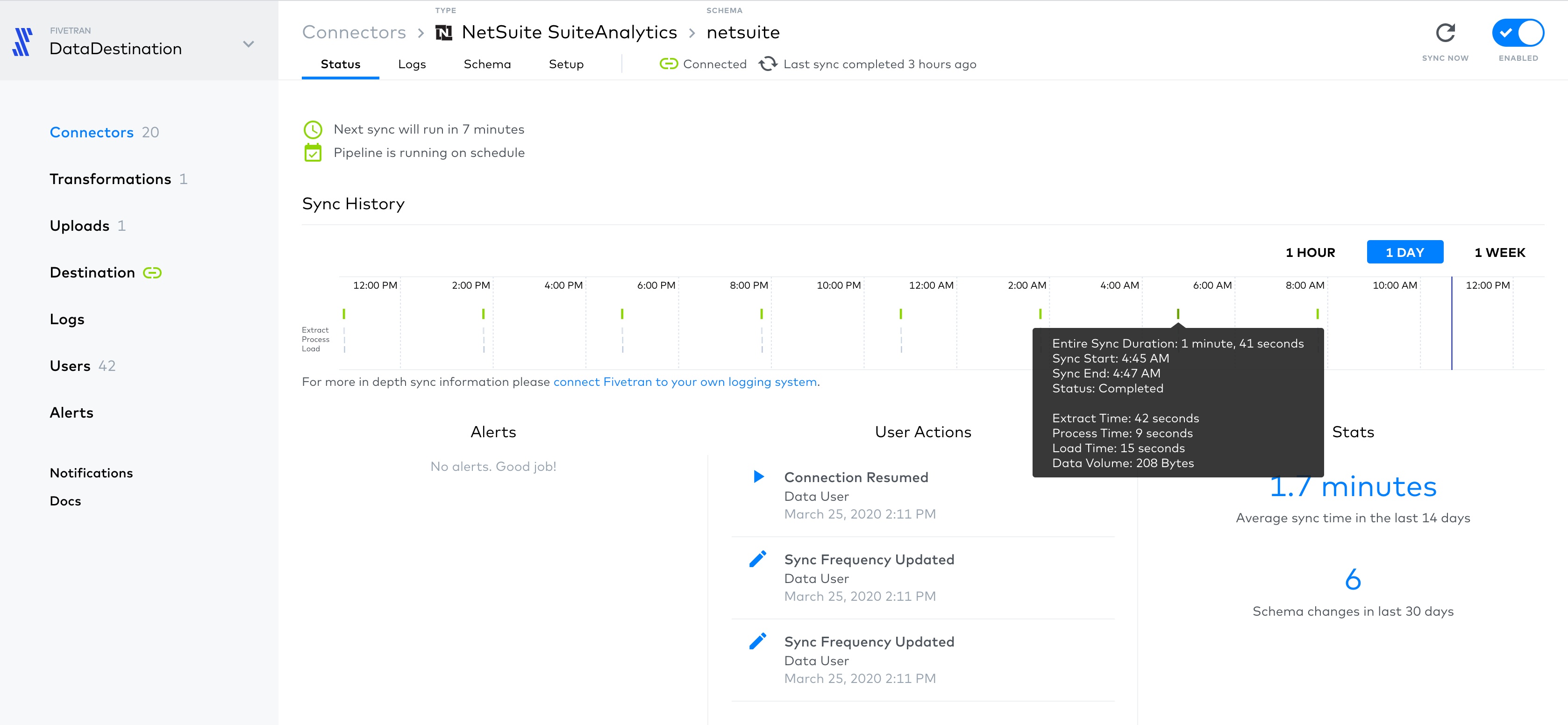To become a data-driven business and perform effective data management, organizations must construct high-performance data pipelines that can effectively collect, process, and analyze their enterprise information.
When handling data processing and integration, companies have several choices for how to construct their data flows. Instead of writing custom data workflows from scratch, most businesses decide to use an ELT data platform that seamlessly connects the various datasets in their IT ecosystem.
Here are five things you should know about the top ELT tools:
- ELT is an alternative to the traditional ETL data integration model that loads data into the target repository before transforming it.
- The advantages of ELT over ETL include faster loading speeds, efficiency, and flexibility.
- The use cases of ELT include extremely massive datasets, cloud-based architectures, and large amounts of unstructured data.
- Organizations with vast amounts of data need a way to effectively manage and access this data. ELT remains one of the fastest and easiest methods to do so.
- When choosing the best ELT tool, consider factors such as cost, ease of use, feature set, and user reviews.
So, what are the various ELT tools that data teams can use, and how should they choose between them? In this article, we compare and contrast the leading ELT tools based on criteria such as features, pricing, and reviews.
What is ELT?
ELT (Extract, Load, Transform) is a data integration approach, used with data lake implementations, that combines the traditional ETL steps into one process.
The steps of an ETL pipeline are:
- Extract: First, information is extracted from one or more data sources. These sources may include internal JSON or XML files, metadata, SaaS and CRM platforms like Salesforce, external websites, and relational or non-relational databases (e.g. MySQL, SQL Server, Apache Cassandra, PostgreSQL, etc.).
- Transform: Next, the information goes through various data transformations to prepare it for business intelligence and data analytics. The goal of these transformations is to improve data quality and standardize different data types to fit the schema of the target repository.
- Load: Finally, ETL tools load data into a centralized repository—typically a data warehousing solution such as Snowflake, Amazon Redshift, or Google BigQuery. Here, analysts can run real-time queries on big data and view dashboards and visualizations, uncovering hidden trends and patterns to achieve a more comprehensive and complete view of enterprise data.
However, with ELT (Extract, Load, Transform) the order switches in which data integration platforms load and then transform data: information is first loaded into the target destination before being transformed in place. This ELT process enables faster loading times allowing organizations to rapidly leverage their existing data infrastructure for analytics, machine learning, and business intelligence.
Recently ELT tools have risen in popularity, offering an alternative to the traditional ETL process
ELT Tools: Use Cases and Benefits
The difference in which the loading and transformation stages are performed in ELT may seem like a minor alteration. However, this change actually has a major impact on the use cases and benefits of ETL vs. ELT.
The advantages of ELT as compared with an ETL solution are:
- Faster loading speed: With ELT, data is first loaded and only then transformed inside the target repository on an ad hoc basis. This typically means that the ELT process completes more quickly than ETL.
- Transforming only the data you need: ETL pipelines transform all the information consumed during the data integration process, regardless of whether this information is actually used for analytics and reporting. On the other hand, ELT processes load data first into a target repository and then transform the data as needed to optimize querying and data processing.
- Greater flexibility: ELT can work with both traditional data warehouses and “data lakes,” which are repositories designed to hold unrefined, unstructured information. There’s no need for users to consider the specific data schema of the target repository during the transformation stage.
Some of the most common use cases of ELT include:
- Massive amounts of data: ELT can excel at data ingestion for extremely large quantities of information. Because ELT does not require users to transform data before storing it, the ELT process can be a better fit for use cases such as streaming real-time data.
- Unstructured data: ELT is a better fit for unstructured data: information that does not fit neatly into a standard relational database schema. Common types of unstructured data include text, audio, images, and video.
- Cloud-based architecture: ETL is a good match for on-premises data integration workflows, which reduce the size of the input data through transformations before storing it. ELT is a good match for cloud data warehouses that offer greater scalability, which means that storage capability is less of a concern in cloud platforms such as AWS and Microsoft Azure.
List of the Top 5 ELT Tools
1. Integrate.io
Integrate.io is a powerful yet user-friendly data migration and integration tool that supports both ELT and ETL architectures.
-
Features: The features and functionality of Integrate.io include:
- More than 140 pre-built connectors and APIs for data sources such as software applications and databases.
- A drag-and-drop, low-code visual interface with more than 220 options for data transformation.
- CDC (change data capture) that automatically detects and extracts the records that have changed since the previous data integration job.
-
Reverse ETL for pushing information out of a centralized data warehouse and into third-party software tools, where it can be analyzed by non-technical business users.
- Pricing: Integrate.io pricing is tailored exactly to each client's needs and requirements with a usage-based component couple with features and functionality. Clients choose which level of platform usage they will require and then which features and functionality to create a custom plan to fit their use case.
- Reviews: On the G2 website, Integrate.io has an average rating of 4.3 out of 5 stars, based on 189 reviews. Integrate.io user Jagadish B. writes that the platform is “one of the best cloud-based data ETL options available in the market... The inbuilt ETL components are designed in such a way that they require minimum programming or tech knowledge to start using them... The assigned account managers are very supportive of your organization's needs.”
2. Talend Open Studio
Talend Open Studio is an open-source ETL tool that also supports ELT workflows.
-
Features: The features and functionality of Talend Open Studio include:
- A limited number of connectors, including Oracle, Teradata, and SQL Server databases and SaaS apps such as Marketo, Salesforce, and NetSuite.
- Support for building basic data pipelines and running simple ETL and data integration jobs.
- Pricing: Because it has an open-source Apache software license, Talend Open Studio is free of charge for all users.
- Reviews: On the Gartner website, Talend Open Studio has an average rating of 4.2 out of 5 stars, based on 49 reviews. One reviewer writes that “Using Talend Open Studio for integration projects is very easy to get up and running and somewhat intuitive... I've found the support team for Talend to be hit or miss depending on the issue we experience.”
3. Stitch
Stitch is an ETL and ELT tool that was acquired by Talend in 2018.
-
Features: The features and functionality of Stitch include:
- Connectors for more than 140 data sources to move information into your choice of cloud data warehouse.
- Management and orchestration features for complete visibility into data pipelines.
- Data encryption and masking for regulatory compliance purposes (HIPAA, GDPR, SOC 2, etc.).
- Pricing: Stitch offers “standard,” “advanced,” and “premium” pricing tiers, based on the number of rows of data consumed per month. The standard tier starts at $100 per month, with 5 million rows of monthly data.
- Reviews: On the G2 website, Stitch has an average rating of 4.5 out of 5 stars, based on 66 reviews. One reviewer writes that “So far, we have had no issues with Stitch and have come to rely more and more on it for our critical data replication workflows... We could easily see outgrowing Stitch as our replication demands increase. The pricing we believe is alright at smaller volumes but could easily become an issue as it is row-based.”
4. Fivetran
Fivetran is a cloud-based data integration platform that supports both ETL and ELT processes.
-
Features: The features and functionality of Fivetran include:
- More than 300 fully managed connectors for various software applications and databases.
- Custom data transformations using the open-source dbt Core tool.
- Advanced features for data governance and data security, including custom roles, SCIM user provisioning, SSH tunnels for encryption, etc.
- Pricing: Fivetran charges based on the number of monthly active rows that customers use. More expensive tiers also offer advantages such as faster data syncs, guaranteed uptime, and 1-hour responses to customer queries.
- Reviews: On the G2 website, Fivetran has an average rating of 4.2 out of 5 stars, based on 350 reviews. Fivetran user Mithun M. writes: “It is very easy to get started and ingest data. There is no infrastructure or code to manage... The pricing model is not very good. Pricing based on the monthly active rows is confusing and difficult to forecast the pricing.”
5. Matillion
Matillion is a cloud-native data integration platform that can handle ELT and ETL workflows.
-
Features: The features and functionality of Matillion include:
- More than 80 out-of-the-box connectors to extract data from software applications and services.
- Compatibility with a number of cloud data warehouses, including Snowflake, Redshift, Azure Synapse, and BigQuery.
- A modern, drag-and-drop, browser-accessible user interface with components for read, write, join, and transform operations.
- Pricing: Matillion uses a credit-based pricing model, and ingesting rows of data consumes these credits. The platform also offers different tiers of credits, with more expensive tiers offering advanced functionality.
- Reviews: On the Gartner website, Matillion has an average rating of 4.4 out of 5 stars, based on 65 reviews. One reviewer writes: “Matillion ETL works well for what it is designed for, which is simple data movement into cloud data warehouses... Git integration is severely lacking... You can't push code to production through CI/CD pipelines when something is running.”
ELT Tool Comparison and Analysis
We’ve discussed some of the best ELT platforms—so how can you choose among them? Below are some of the factors you should consider when doing an ELT tool comparison analysis:
- Cost: What pricing model does the ELT tool use, and how expensive will it be? Will you have to pay extra for customer support?
- Ease of use: Is the ELT tool user-friendly, with a gentle learning curve that makes it easy to adopt? Does it have no-code or low-code features that let non-technical users define their own data pipelines? Does it require knowledge of a specific programming language, such as Java or Python?
- Feature set: Does the ELT tool have connectors and APIs (application programming interfaces) for the data sources that you need? Does it come with advanced functionality for special use cases, such as change data capture and reverse ETL?
How Integrate.io Can Help with ELT
While ELT is a newer alternative to traditional ETL, it still provides a number of benefits and use cases. This prompts the question: which ELT tool is best for your specific requirements and situation?
For many companies using Integrate.io, it’s never been simpler to automate complex data engineering pipelines. The Integrate.io platform comes with more than 140 pre-built connectors and APIs for the most popular databases and SaaS apps. What’s more, Integrate.io offers a no-code, drag-and-drop visual user interface that makes it easy to get started constructing ELT workloads.
Integrate.io also comes packed with useful functionality that makes it the best ELT platform for countless businesses. For example, Integrate.io includes a CDC (change data capture) feature that detects the records that have changed since your last data integration job, saving valuable time and effort. Integrate.io also offers reverse ETL, letting you move information out of the data warehouse and into third-party systems for easier access and analysis.
Ready to learn how Integrate.io can help with your data integration workflows? Try Integrate.io yourself with a free 14-day trial. After you sign up, schedule your ELT trial setup meeting. During the meeting, one of our experts will help you learn how to get the most out of your trial.




















